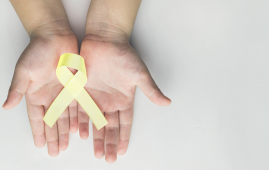

According to the National Eye Institute, 39 million Americans will have myopia, or nearsightedness, by 2030. Previous study indicated that using low-dose atropine drops may help to reduce the progression of myopia in Asian children. However, fresh research from the University of Alabama at Birmingham indicated that low-dose atropine eye drops were no better than placebo drops at decreasing myopia progression and elongation of the eyes of a varied sample of children in the United States.
Prior to this study, recent trials conducted mostly in East Asia demonstrated a benefit from.01 percent atropine in reducing myopia. The randomized controlled trial, undertaken by the Pediatric Eye Disease Investigator Group and financed by the NEI, looked at the use of low-dose atropine drops in children with myopia over a two-year period. Stronger concentrations of atropine drops have been used by eye specialists for years to slow myopia growth, and while these higher doses have proven to be helpful, they produce light sensitivity and hazy vision. As a result, researchers are looking into lower amounts of atropine that have been shown to have less side effects.
“The different response to atropine in our U.S.-based study compared to East Asian studies may reflect racial differences in how children with myopia respond to low-dose atropine,” said Katherine Weise, O.D., a professor in the School of Optometry and co-lead researcher. “Children in the U.S. may need a different dose of atropine to be able to see a response.”
For the study, 187 children aged 5 to 12 years with low to moderate bilateral myopia were randomly assigned to receive nightly low-dose atropine eyedrops (125 children) or placebo eyedrops (62 children) for two years. The group assignments were kept a secret from the study participants, their parents, and the eye care providers. Patients were cared for at 12 study center locations across the United States, including UAB. There were no significant differences in the degree of myopia across the groups after the treatment period, nor were there significant differences in axial length when compared to baseline measures.
According to Weise, 95 percent of the youngsters who began the research at one of the 12 sites around the country finished it. At UAB, 100 percent of the children in the research completed the study criteria, the highest rate among the 12 centers, with 60 percent of UAB’s participants coming from underrepresented minority groups.
“This type of dedication and rigor in research by our very diverse group of trailblazing kids helped us better understand a potential need to shift our focus from this concentration of atropine eye drops in U.S. kids in our work toward understanding nearsightedness better,” Weise said.
More research, according to Weise, is needed to better understand the distinctions in the myopic eye among different races and ethnicities in order to better adapt treatment choices for myopic individuals.
“It was an honor to provide national leadership with Michael Repka, M.D., of Johns Hopkins University for this important study,” Weise said. “I’m also proud of the 25 local kids in the UAB area who were part of this study. These important study results will be read worldwide and further advance the treatment of myopia in children.”
more recommended stories
 Phage Therapy Study Reveals RNA-Based Infection Control
Phage Therapy Study Reveals RNA-Based Infection ControlKey Takeaways (Quick Summary) Researchers uncovered.
 Pelvic Floor Disorders: Treatable Yet Often Ignored
Pelvic Floor Disorders: Treatable Yet Often IgnoredKey Takeaways (Quick Summary) Pelvic floor.
 Urine-Based microRNA Aging Clock Predicts Biological Age
Urine-Based microRNA Aging Clock Predicts Biological AgeKey Takeaways (Quick Summary) Researchers developed.
 Circadian Control of Neutrophils in Myocardial Infarction
Circadian Control of Neutrophils in Myocardial InfarctionKey Takeaways for HCPs Neutrophil activity.
 E-Cigarette Use and Heart Attack Risk in Former Smokers
E-Cigarette Use and Heart Attack Risk in Former SmokersKey Takeaways for Clinicians and Nurses.
 36-Week Pre-eclampsia Screening May Reduce Term Risk
36-Week Pre-eclampsia Screening May Reduce Term RiskA New Preventive Strategy for Term.
 Cardiovascular Risk and Sudden Cardiac Death in Diabetes
Cardiovascular Risk and Sudden Cardiac Death in DiabetesRising Sudden Cardiac Death (SCD) Risk.
 Poor Kidney Function and Alzheimer’s Biomarkers Explained
Poor Kidney Function and Alzheimer’s Biomarkers ExplainedPoor kidney function may influence levels.
 Walking Speed Before Hip Replacement Predicts Recovery
Walking Speed Before Hip Replacement Predicts RecoveryNew Evidence Points to a Simple,.
 Neuroblastoma Drug Combo Extends Survival in Models
Neuroblastoma Drug Combo Extends Survival in ModelsA Promising Shift in High-Risk Neuroblastoma.

Leave a Comment